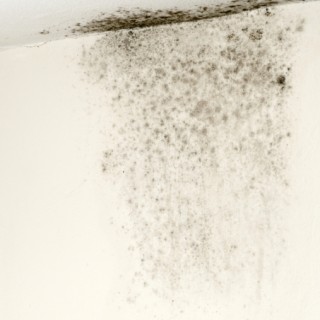Moisture: A Key to Home Energy Efficiency

Home energy efficiency is often dominated by discussions about cooling and heating. After all, heating and cooling (including water heating) account for about 60% of energy expenses in the average Single Family Home. Yet the discussion often neglects an important factor in home comfort and in heating and cooling usage: moisture.
For example, most people will feel cooler in a room at 75˚F and 25-percent relative humidity than in a room at the same temperature with 40-percent relative humidity. Rooms with higher relative humidities feel warmer, so occupants are less likely to raise their thermostat setting in winter when they have a healthier level of humidity. Optimal moisture levels depend on many factors: time of year, regional climate, ventilation, vapor barriers, home-heating type, and more. During the summer, optimal indoor moisture levels are between 30 and 40 percent.
There are many problems associated with high or low levels of moisture in a home. Homes that are too “tight” (that is, homes that trap moisture inside without accounting for humidity) can lead to costly mold and indoor air quality issues. Homes that are air-tight, like Passive Homes, employ a vapor barrier and a mechanical, balanced ventilation system with heat recovery that addresses both air-quality and comfort issues by continually exchanging indoor air. The EPA has some recommendations for building and renovating homes so that moisture is not a problem.
- Manage water outside the foundation’s walls. Simply put, water should slope away from the home. Water spouts should lead away from the home and homes with puddles near corners or other issues should speak with a landscaper to fix drainage problems.
- Manage water inside foundation walls and the basement or crawl space of the home. Moisture often enters the home through the ground. By covering dirt floors with a 6 mil poly you can mitigate much of that moisture.
- Understand and address your home’s moisture system. Some homes do a good job controlling air movement and use vapor barriers adequately on the warm side of walls and roofs. Speak with a home energy auditor who can give you specific recommendations based on your home, budget, and climate.
- Make sure your roof and attic keep water our of the house. If there is moisture buildup on the cold side of the home, take preventative weatherization measures to ensure moisture isn’t penetrating building materials.
- Ensure your home is properly ventilated with exhaust fans in key locations like the bathroom and kitchen. Today’s exhaust fans often produce very little noise, remove odors and pollutants from rooms, and can address humidity levels in the whole house. Make sure that vents lead directly outdoors, and that they don’t vent into the attic or another enclosed space.
- Get a properly sized A/C unit. Oversized air conditioners can lead to rapid cooling without addressing humidity levels. That leads to problems with high relative humidity. Speak with an energy auditor or HVAC technician about the proper unit for your home.
- Remember, some humidity is important. A weatherized home is easier to control, allowing you to manage moisture levels with a humidifier.








